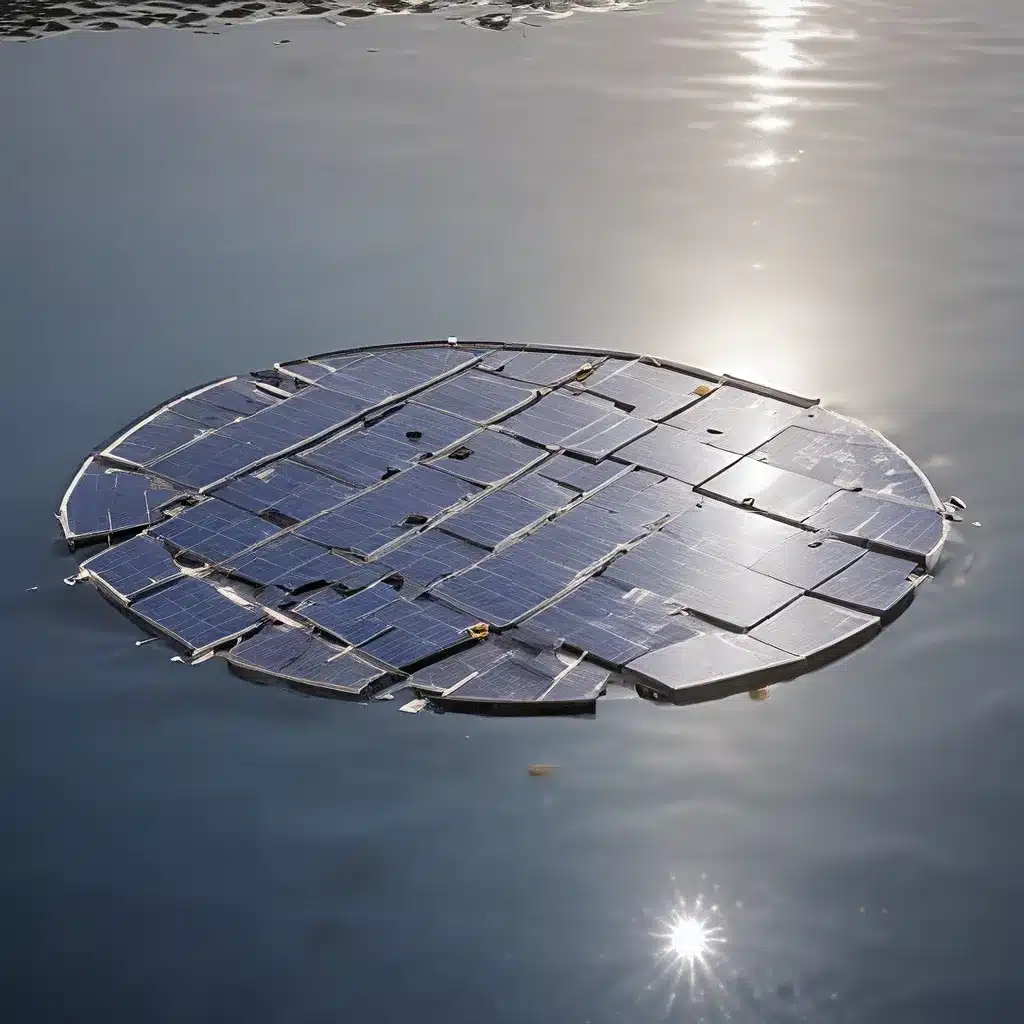
As the world grapples with the urgent need to address climate change, one of the most promising yet underexplored areas for renewable energy has finally started gaining traction – the ocean. That’s right, floating solar is making waves (pun intended) as an innovative solution for generating clean, sustainable power.
You see, while the global spotlight has been firmly fixed on land-based solar farms, a quiet revolution has been brewing on the water. From reservoirs and stormwater basins to dams and even lakes, these bodies of water are now playing host to a new breed of solar panels – the kind that float on the surface rather than being planted firmly in the ground.
And let me tell you, these floating solar farms are no small potatoes. In fact, New Jersey is currently home to the largest floating solar project in the United States, boasting an impressive 16,510 panels that generate a whopping 89 megawatts of power. That’s enough to power more than 3,000 homes!
Not to be outdone, our friends over in Healdsburg, California have their own 48-megawatt floating solar farm, proving that this technology can be a game-changer, even in water-scarce regions.
But the real kicker? The Department of Defense has even gotten in on the action, unveiling its first 11-megawatt floating solar system at Camp Mackall, a Special Forces training site in North Carolina. And get this – it’s not just about the clean energy; the panels will also serve as the main power source during outages from storms, and they’re expected to cut energy costs by a cool $100,000 a year. Talk about a win-win!
Now, you might be wondering, “But wait, how is this better than good old-fashioned land-based solar?” Well, my friend, let me tell you – floating solar has some pretty nifty advantages up its sleeve.
For starters, the water helps keep the panels cool, which means they can actually generate more electricity than their land-based counterparts. You see, solar panels can be a bit like us – they work less efficiently when they get too hot. But with the water acting as a natural coolant, these floating beauties can really strut their stuff.
And the cost benefits? Well, let’s just say that floating solar projects are around 10 to 15% more expensive to set up than their land-based counterparts. But hear me out – the reduced operation and maintenance costs, along with the potential for water conservation, more than make up for that initial price tag.
You see, those big ol’ rafts of floating panels can actually seal the surface of the water, helping to reduce evaporation. This is a particularly crucial advantage in drought-afflicted areas like California, where every drop of water counts.
But wait, there’s more! Floating solar can also be a more palatable option for local communities. One of the big criticisms of land-based solar is that it’s seen as an eyesore or takes up too much precious space. But when you plop those panels right on top of a body of water, it’s kind of like a built-in camouflage. Plus, it’s a great way for water districts to make the most of their existing assets without sacrificing valuable land.
Of course, it’s not all sunshine and rainbows (or in this case, sunshine and water). Floating solar isn’t as simple as just slapping some panels on a raft and calling it a day. There are a few key considerations to keep in mind.
For starters, not all bodies of water are created equal – fast-moving water, open ocean, or shorelines with big waves are all off-limits. And then there’s the cost factor. As I mentioned, these floating solar projects are a bit pricier than their land-based counterparts, so the financial feasibility needs to be carefully evaluated.
And let’s not forget about the technical challenges. Deep water poses its own set of hurdles, like figuring out how to properly ballast those floating rafts. Plus, changing water levels and annual drainage to keep some water facilities in optimal condition can also impact the performance of these systems.
But hey, where there’s a will, there’s a way. And trust me, the renewable energy industry is nothing if not innovative. In fact, just recently, renewable energy solution provider SDN unveiled new 600-watt solar modules designed specifically for floating installations. Talk about pushing the boundaries!
So, what’s the bottom line? Well, while floating solar may never be able to fully compete with land-based solar in terms of sheer output or scale, it’s definitely carving out its own niche in the renewable energy landscape. And with continued advancements in technology and a growing demand for clean energy solutions, I have a feeling we’re only just scratching the surface of what this water-based wonder can do.
In fact, the US floating solar panels market is forecast to grow at a compound annual growth rate of 22.6% to reach over $180 billion by 2030. That’s a pretty impressive trajectory, if you ask me.
And the best part? This isn’t just about generating clean, sustainable power. Floating solar projects can also provide a steady stream of revenue for the owners, whether that’s local water districts, government agencies, or even private companies. By selling the excess energy back to the grid, these projects can become a reliable source of income, all while doing their part to combat climate change.
So, if you’re a water district or a forward-thinking real estate investor, I’d highly recommend keeping a close eye on the Firewinder and exploring how floating solar could be a game-changer for your organization. The future is bright, my friends – and it’s floating on water.

